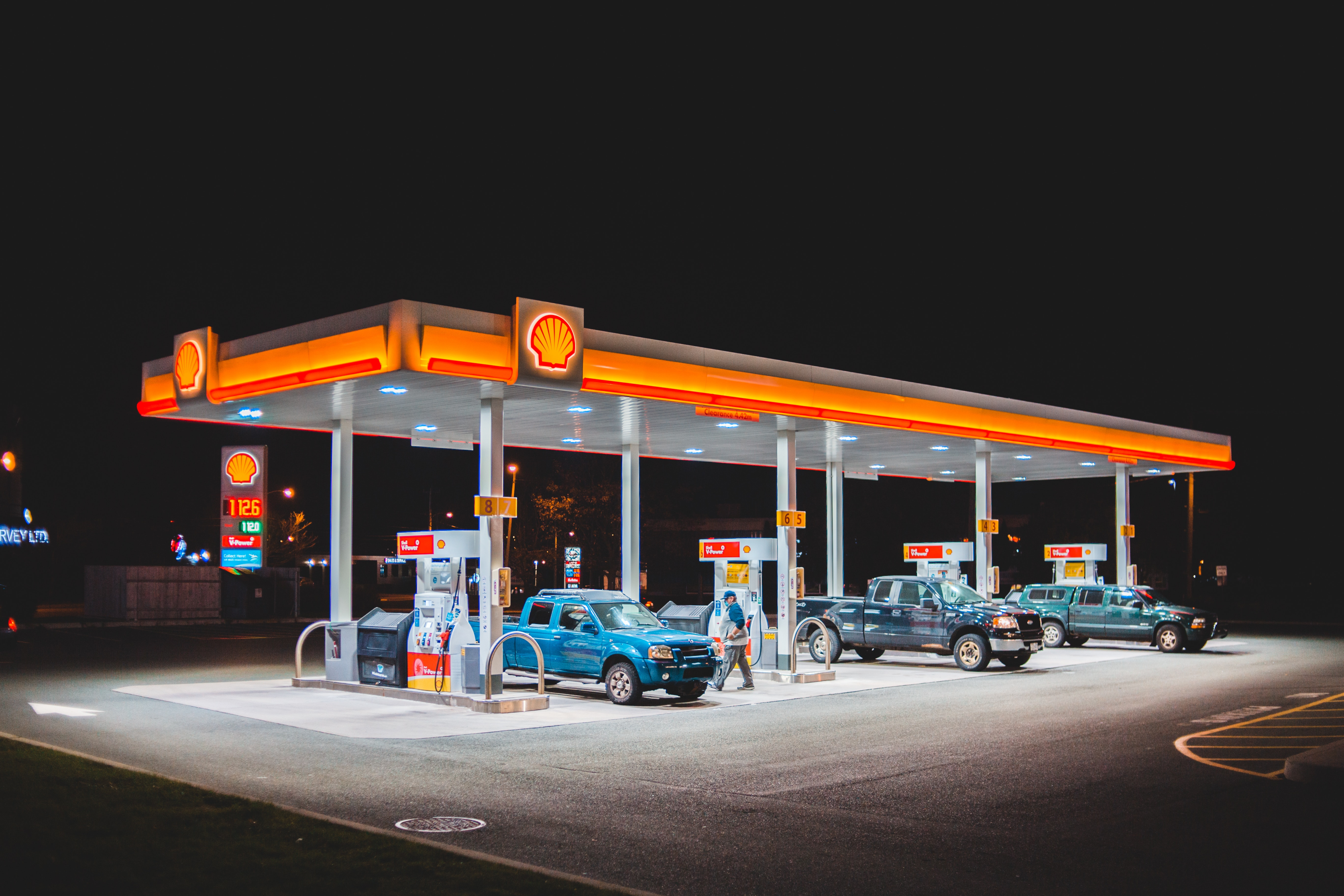Contents
A portable generator without fuel is not going to be of much help during an emergency situation. You need to know how to store gas whether you need it for your generator or bug-out vehicle. When the lights go out, the accessibility of gasoline and other fuels can be the difference between life and death. Frequent calamities and political unrest have made it important for survival enthusiasts to take the necessary steps required to ensure their and their family’s survival.
When gasoline and fuel supplies get cut off immediately, a gas left in the tank of your truck or portable generator will only go so far. If improperly stored, gas can actually go bad and explode. This guide will explain the right way to store gasoline for long term use.
Need to Stockpile Gasoline
There are several types of disaster situations that place gasoline supplies in jeopardy. Electromagnetic pulse (EMP) is one of the most likely disasters to occur because of nuclear attacks, solar flares, or EMP weapons. EMP would quite literally wipe out the entire electric grid in your area. Depending on the magnitude of blast, it may also fry your electronics. This means that gas pumps would probably not function anymore.
As witnessed during the Bosnian War, gas is usually one of the first commodities to get hit during a war. Stemming from this, just because gas supplies would disappear in a SHTF situation, you don’t necessarily need to stockpile gallons of the stuff in a secret storage tank. After all, you probably won’t need 2 gallons of gas a day in your vehicle. These are a few things you should stockpile gasoline for:
- Fuel your portable gas generator
- Fuel your bug out vehicle
- Fuel chainsaws, lawn mowers, and other gas-powered tools
Pro tip: Check out this handy guide about the best gas and propane dual technology generators for survival
Issues With Storing Gasoline for Long Term

There are several concerns to storing inflammable fuels for a long time. Volatile organic compounds (VOCs) present in gasoline tend to evaporate over a period of time. Additionally, water can easily get mixed with fuel sold in the United States. In fact, gasoline and diesel pull water right out of the air.
Almost every type of gasoline sold in the US has ethanol mixed with it. This is nothing but corn alcohol that readily mixes with gas. You need to address these issues when stashing fuel at your home or bug-out location. Not being careful may create an explosion or fire hazard in the process.
Gasoline that remains too long in the carburetor tends to varnish and change to a gum like substance. This causes starting problems and other issues in a portable generator. It is best to use or replace your gas storage every year. You need to make sure that you always have ready and fresh fuel on hand to tackle any type of emergencies.
You should also consider adding a fuel stabilizer to extend the shelf life of gas. Without a decent fuel stabilizer, you will need to cycle through your stash of gasoline every few months. You can keep 25 gallons of gas fresh for 12 months with a 10-ounce bottle of stabilizer. Fuel stabilized gasoline can stay fresh for up to 2 years by doubling the amount of additive.
Storing Fresh Gasoline in a Portable Generator
You need to remain prepared during an emergency. 5 – 10 gallons of gasoline is usually enough to get a generator started. However, you will need more if you want the generator to last a multi-day outage. Gas stations quickly run out gasoline and other fuels during a major power outage, such as the ones after a hurricane or flood. Gas availability trackers are super helpful in identifying the gas stations that still have fuel left.
You can guarantee peace of mind and power by having a stockpile of fresh gas on hand. You won’t need to fight panicked crowds or wait for the last few tanks to run out. Portable generators are useful in getting the power you need during a blackout or while in the wilderness. These are a few steps you can take to make sure the gasoline in your generator is ready to be used when disaster strikes:
- Add fuel stabilizers to the tank of your portable generator. This additive will prevent the gas from gumming up when stored.
- Always close the generator’s fuel shutoff valve when running the generator engine dry of stored gasoline. This will prevent old gas stored in the generator from gumming up the carburetor.
You will need to take additional precautions when it comes to refueling your portable generator. While many portable generators claim that you can put in new fuel while the motor is running, you should ideally never attempt this. Generators tend to get very hot when they have been running for a while. This is true for inverter generators as well that are not being used at maximum capacity.
You should always allow a generator to cool down completely before attempting to pour gas in the fuel lines. If you spill ethanol blended gas on a hot motor, it can cause engine problems. It can also cause the engine to ignite since gasoline is a highly flammable product.
Never introduce sparks or flames to stored gasoline. You should never smoke near ethanol blended or pure gas. Always use a funnel or pour spout when refueling your generator. The tank may be cool enough for the refueling. However, it is possible that there are other parts that may still be hot enough to catch fire because of spilled gas.
Static electricity is another problem when refueling using stored fuel. You should always pour gasoline in a slow and controlled manner to avoid static electricity. This will prevent old gasoline left in the storage tank from igniting.
How to Properly Store Gas in a Can
You may already have a full 5-gallon gas tank on hand. However, you will need a lot more in case of an emergency or disaster. It is best to have multiple gas cans to store more gas. You will need to keep the gas stored safely away from heat and moisture. Fuel stored properly can easily stay good for up to a year. However, you will need to add petroleum based additives for long term gasoline storage.
Most bug-out experts recommend keeping at least 25 gallons of gasoline on hand in case of a power outage. You can either invest in a single 25 gallon tank or use multiple 5 gallon cans. This will be helpful if you want to safely transport gasoline to another location during an emergency. Don’t forget to purchase cans with a convenient siphon for fueling the tank.
You should add a few ounces of fuel stabilizer to every 5-gallons of pure gasoline. It takes about 10 ounces of stabilizer to ensure a 25-gallon fuel tank remains fresh.
Pro tip: Here is an informative video on long-term gasoline fuel storage and being prepared for natural disasters and emergencies.
Safely Maintain Your Gasoline Stockpile

While storing dozens of gallons of gasoline, diesel fuel, or any other highly flammable fuel, you need to make sure it remains fresh, cool, and depressurized. It can be dangerous leaving fuel tanks under the open hot sun. Keep the fuel tanks away from direct sunlight in a well-ventilated area. Sheds or garages are great options.
Make sure the gas storage area is away from any sources of heat, such as space heaters, car’s exhaust pipes, hot water heater with functioning pilot lights, or any other similar ignition sources. You should regularly inspect the fuel tanks for pressurization. Remove the cap if the can appears to be ballooning with gas fumes. This will allow the fumes to escape. It will also keep the fuel tank at safe pressure levels.
You need to be careful about static electricity. Never store your gas cans or tanks on carpeted surface or any other area that is prone to static. You can store gas safely in a flammable liquids storage cabinet or on a wooden table. This will reduce the likelihood of static electricity issues.
Best Container for Keeping Gasoline Fresh
Metal containers are among the most stable solutions for storing gas safely for a longer period. Plastic can may experience a chemical reaction with stored ethanol gas, which can leech into the fuel and degrade its quality over time. While approved containers from your local gas station is a great short-term solution for storing gas, you cannot use it indefinitely.
If you really want to use plastic cans, you should choose military-grade gas containers. These have thicker walls and degrade less as compared to cheap gas cans. There are several brands that make military-grade plastic containers that can be used for storing fuel safely for up to three years.
Metal gas cans are any day better than the thickest plastic cans. A metal container will catch rust after some time. They are still more durable than plastic containers. You can also use a square, 5-gallon surplus military gas container, known as a “Jerry” can.
You need to ensure that your containers are sealed properly. You cannot allow air or moisture contamination. Create a secondary seal by using a plastic bag to cover the mouth of the can. You can screw a cap over this to seal the fuel inside.
How Long Does Gas Last?
All types of fuel lose their octane rating over a period of time. As per the American Petroleum Institute, ethanol gasoline can lose its combustible qualities in 1 – 3 months. Regular gasoline can last for as long as 3 – 6 months. Most gasoline types can be safely stored for up to 2 years with the aid of fuel stabilizers.
If storing gas for a longer period of time, you need to choose a higher-octane variant. 93 octane premium fuel will last at least twice as longer as regular 87 octane gasoline. You should choose gasoline that doesn’t have any added ethanol. This is a corn-based organic fuel that is usually added to regular gas to bring down prices. Ethanol added gasoline will be 10 – 15% cheaper. However, it will also be more volatile and degrade quickly.
Always add a fuel stabilizer for maximum shelf life. You can pour it directly into the gas can or tank.
Local Laws on Stockpiling Gasoline
The fire department usually recommends storing a maximum of 25 gallons. However, EPA suggests not keeping more than 1 – 5 gallons of stale gas in your home. This is in addition to the fuel in your car’s gas tank. Based on this, these are just recommendations. You can find out more about applicable laws by visiting your local fire department. Depending on where you live, there may be different local laws about storing gas.
For instance, in New York, you will need to register with the local authorities if you have more than 110 gallons of gasoline in an underground storage tank or attached garage. In California, gas can only be stockpiled if it’s properly stored in an approved and sealed container. Always call the local fire department about any applicable fire codes.
Has Your Gasoline Stockpile Gone Bad?
Gasoline has a fixed shelf life and tends to deteriorate over a period of time. This happens because the volatile compounds present in gas begin breaking down causing a gumming reaction. Varnish deposits make the gasoline less combustible. Note that expired gasoline is still highly flammable. It can easily explode if exposed to a spark. It is just not as effective or powerful in firing up a generator or car.
There is no standard guide to the shelf life of gasoline. Smell is one of the best ways to tell if your stockpile has gone bad. Expired fuel gives off a pungent and strong odor. This is different from the fresh scent that lingers at gas stations. You can also use a conservative estimate of 1 – 3 months (depending on the variant) to gauge the expiration date. Fuel additives can be added to stabilize the fuel over a longer period of time.
If you don’t use the gas within 30 – 90 days and haven’t added any fuel stabilizers, it is best to safely dispose it off. Gasoline has a short shelf life and should always be discarded as per local guidelines.


